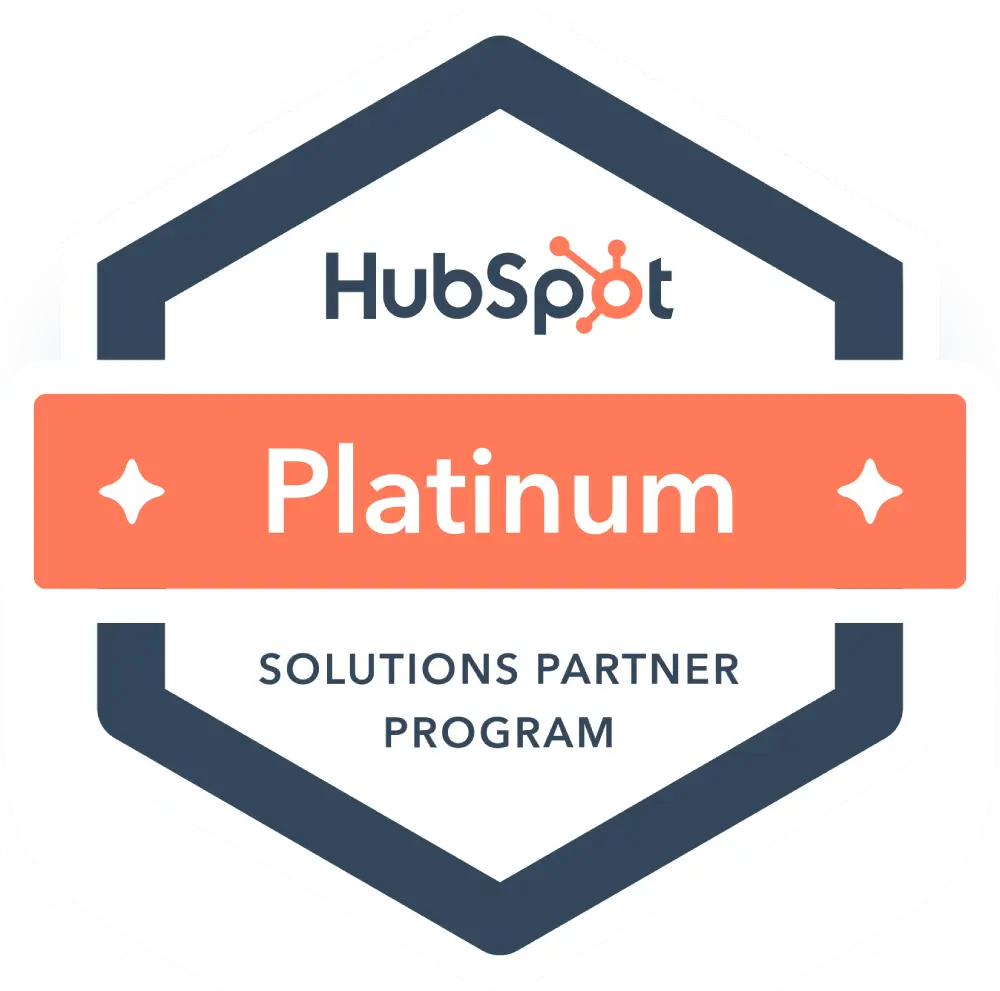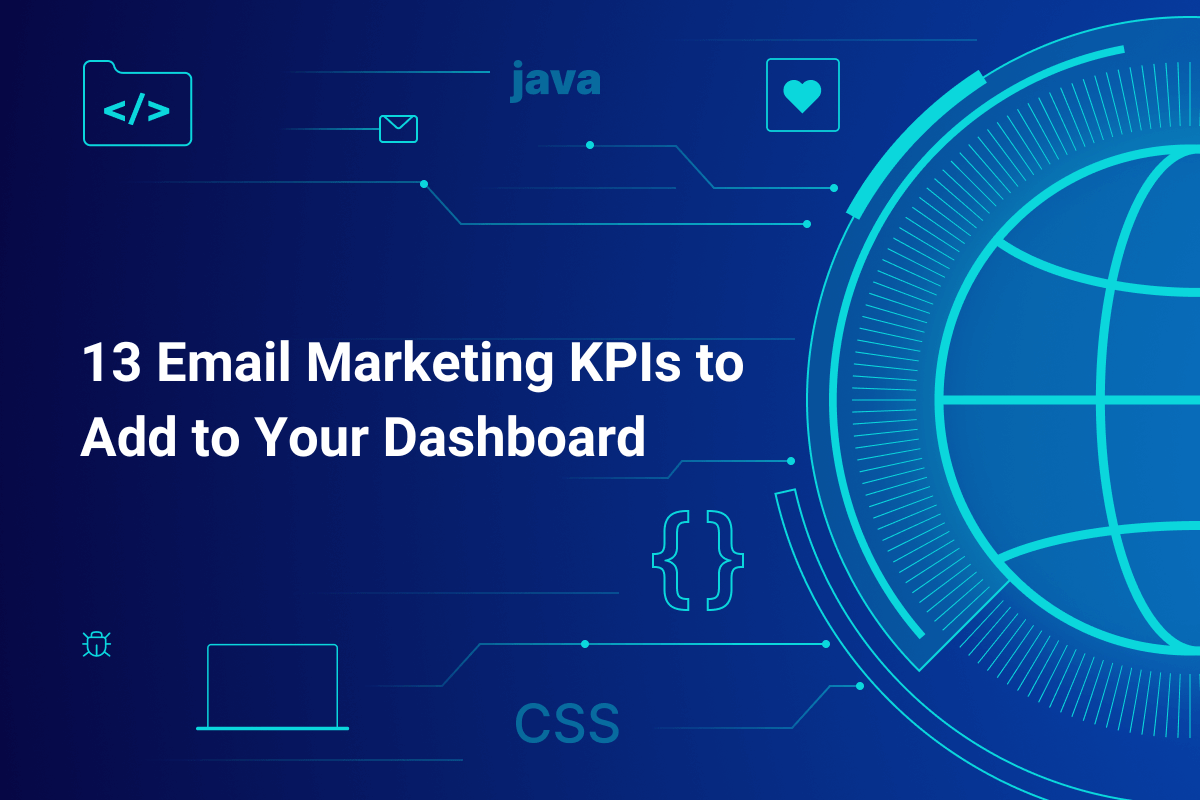There’s always a hot new B2B marketing trend to jump on, but “old school” email marketing remains a vital tool for startups and their CMOs. Its unique blend of accessibility and effectiveness makes it a must-have in any marketing strategy.
Consider this: a recent study shows that businesses see an average return of $36 for every dollar spent on email marketing. This striking figure showcases email marketing’s unparalleled ROI, especially in B2B.
Discussing ROI brings us to the heart of the matter: Key Performance Indicators (KPIs). They’re the heartbeat of your campaigns, guiding and shaping your strategies for tangible results. Strategically selecting and using the right email marketing KPIs can turn every campaign into a success story.
Here’s how to harness the full power of email marketing, one KPI at a time.
What are email marketing KPIs, and why do you need them?
Key Performance Indicators (KPIs) in email marketing are vital signs for your campaigns. They’re indicators that tell you how healthy your strategy is and where it needs improvement—each offering unique insights into different aspects of your campaign’s performance.
Whether you’re trying to drive sales or nurture leads, each KPI offers a lens through which you can view your progress. For instance, if your goal is to increase customer engagement, metrics like click-through rates and email forwards can provide direct insight into how engaging your content is.
Aligning KPIs with your business goals ensures that you’re not just tracking data for the sake of it but employing it to make informed decisions that drive your business forward. Think of it as setting up signposts along your marketing journey—they’ll help you stay on track, reach your destination efficiently, and make necessary adjustments.
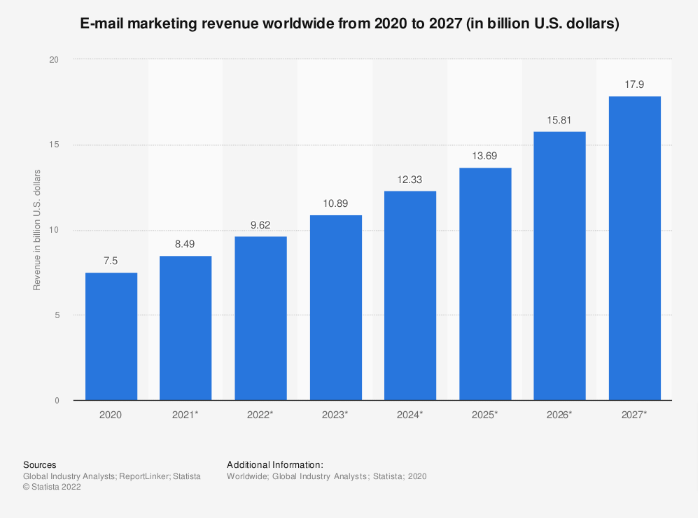
13 Email Marketing KPIs to Add to Your Dashboard
Here’s a baker’s dozen of the top email KPIs your marketing dashboard needs to include.
1. Click-Through Rate (CTR)
Click-through rate evaluates the effectiveness of your email content by measuring the ratio of users who click on a certain link to the total number of viewers. This metric is essential for understanding which parts of your email are most engaging and refining your email content to boost engagement. It reflects how compelling your call-to-action and content are.
To improve your Click-through Rate (CTR), try personalizing your email content to resonate more deeply with your audience. Experiment with different call-to-action (CTA) placements and designs to make them more noticeable and appealing, and conduct A/B tests to determine which variations yield the highest CTR.
Calculating Click-Through Rate (CTR)
Divide the total clicks by the total delivered emails and multiply by 100.
2. Conversion Rate
This metric links your email campaigns to actual business outcomes by measuring the percentage of email recipients who complete your desired action, such as making a purchase. It’s a direct reflection of the effectiveness of your email content and CTA in driving conversions.
Enhance your Conversion Rate by ensuring email content is closely aligned with the landing page it directs to, both in message and design. This consistency reduces friction and increases the likelihood of conversion. Also, make the path to conversion as simple and clear as possible by minimizing the number of steps needed to complete the desired action.
Calculating Conversion Rate
Divide the total number of conversions by the amount of delivered emails, and multiply by 100.
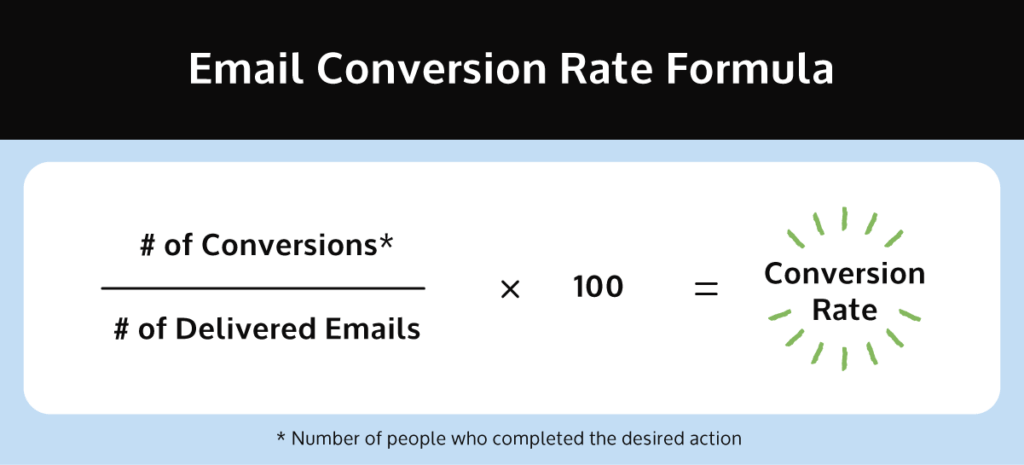
3. Bounce Rate
Your email Bounce Rate helps in understanding deliverability and the quality of your list by measuring the rate of sent emails that couldn’t be delivered. A high Bounce Rate can point to issues with your email list or issues with email servers. Keeping an eye on this KPI is essential for maintaining a clean, effective email list.
Reduce your Bounce Rate by regularly removing invalid or inactive email addresses from your email list. It also helps to maintain a good sender reputation by following best practices for email frequency and content quality, so you don’t get flagged by email service providers.
Calculating Bounce Rate
Divide the total number of bounced emails by the total sent emails, and multiply by 100.
4. Open Rate
Open Rate measures the percentage of recipients who open your email, serving as a primary indicator of initial engagement and the effectiveness of your subject lines. It’s crucial for gauging your email campaign’s immediate impact and understanding how well your audience is receiving your messages.
To improve your Open Rate, experiment with personalized and intriguing subject lines that capture attention. Schedule your emails for when your audience is most likely to check their inbox, using analytics to identify peak engagement times.
Calculating Open Rate
Divide the number of emails opened by the amount of emails delivered, and multiply by 100.
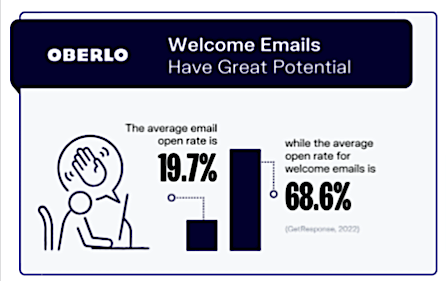
5. List Growth Rate
The List Growth Rate quantifies the rate at which your email list is expanding over a specific period. It reflects the effectiveness of your strategies in attracting new subscribers and retaining existing ones. This metric is crucial because a growing list indicates healthy interest in your content or offerings, suggesting potential for increased engagement, conversions, and revenue.
Boost your List Growth Rate by offering compelling incentives for sign-ups, such as exclusive content, discounts, or free trials. Make sure the subscription process is straightforward and accessible from various parts of your website and social media platforms. Regularly promoting your email list through these channels can significantly boost your subscriber numbers.
Calculating List Growth Rate
Subtract the number of unsubscribes from new subscribers, divide by the total number of email addresses on your list, and multiply by 100.
6. Email Sharing/Forwarding Rate
This KPI measures the virality and shareability of your email content, indicating how often recipients are forwarding or sharing your emails. It’s a strong indicator of the relevance and appeal of your content. A high sharing rate can significantly extend the reach of your campaigns beyond your existing audience.
Increase your Email Sharing/Forwarding Rate by crafting content that resonates with your audience’s interests and including clear, visible calls-to-action encouraging sharing. Incorporate unique or valuable offers to increase the likelihood of your emails being forwarded.
Calculating Email Sharing/Forwarding Rate
Divide the number of shares or forwards by the total number of delivered emails, and multiply by 100.
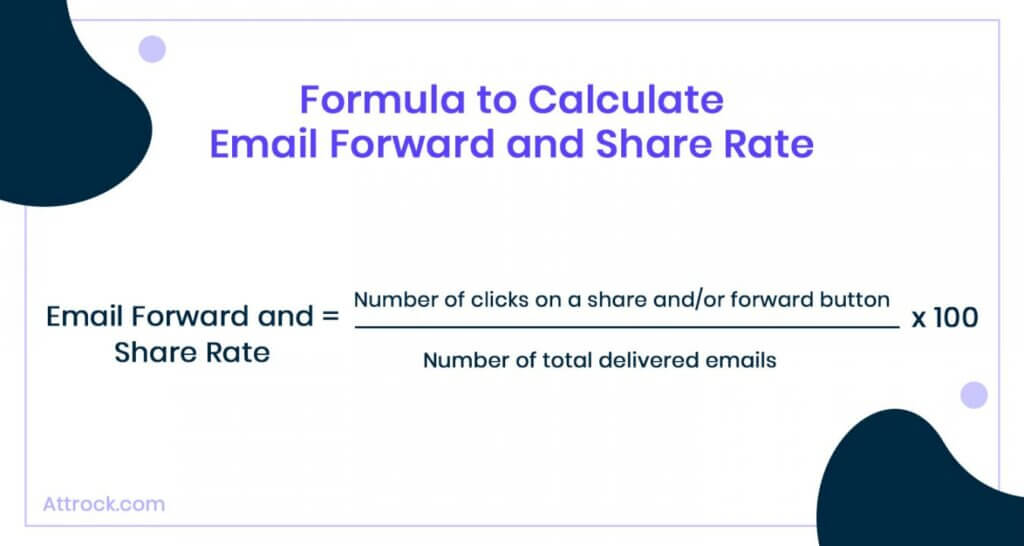
7. Overall ROI (Return on Investment)
Overall ROI calculates the financial return of your email marketing efforts. It’s essential for assessing the profitability and effectiveness of your email campaigns, providing clarity into the financial impact of your email marketing strategies.
To enhance Overall ROI, streamline your email marketing strategies by focusing on high-performing content and optimizing for conversions. Regularly review campaign analytics to identify cost-effective practices, eliminating underperforming elements. Investing in automation and personalization technologies can also improve efficiency and engagement, leading to better financial outcomes from your email marketing efforts.
Calculating Overall ROI
Subtract the cost of the email campaign from the revenue it’s generated. Next, divide the result by the cost of the campaign, and multiply by 100.
8. Campaign ROI
The ROI for individual email campaigns assesses the effectiveness of specific campaigns in terms of financial return. This calculation is similar to Overall ROI but focuses on individual campaigns. It helps pinpoint which campaigns are most profitable and which need improvement, guiding future strategies for better financial outcomes.
Maximize Campaign ROI by refining email content based on past performance insights, targeting specific audience segments for personalized engagement, and focusing on high-conversion strategies. This approach ensures more profitable campaigns and informed future strategies.
Calculating Campaign ROI
Subtract the total cost of the campaign from the total revenue it generated, divide that number by the total cost, and then multiply by 100 to get a percentage. This gives you the profit earned for every dollar spent on the campaign.

9. Subscriber Lifetime Value (SLV)
Subscriber Lifetime Value assesses the long-term value of each subscriber by calculating the total revenue they generate over their lifetime. This metric helps make informed decisions about how much to invest in acquiring and retaining subscribers.
To increase SLV, focus on enhancing subscriber engagement and retention through personalized and valuable content that meets their needs and preferences. Implement loyalty programs or exclusive offers to encourage repeat business. Additionally, use segmentation to tailor your communication effectively, ensuring that subscribers receive relevant messages that drive continuous engagement and purchases.
Calculating Subscriber Lifetime Value (SLV)
SLV combines the Average Purchase Value (APV), Average Purchase Frequency Rate (APFR), and Average Customer Lifespan (ACL). Once you have these figures, the SLV is calculated as:
SLV = APV × APFR × ACL.10. Email List Churn Rate
Email List Churn Rate monitors the rate at which subscribers leave your list and reflects how well you’re retaining your audience. Monitoring this KPI is crucial for understanding and reducing subscriber turnover, which impacts the overall effectiveness of your email marketing strategy.
Lower your Email List Churn Rate by delivering content that matches subscriber preferences, using segmentation for personalization, and conducting re-engagement campaigns for inactive users. Collecting feedback regularly can also guide content improvements to keep your audience engaged and reduce unsubscribes.
Calculating Email List Churn Rate
Divide the number of unsubscribes by the total number of email addresses on your list, then multiply by 100.
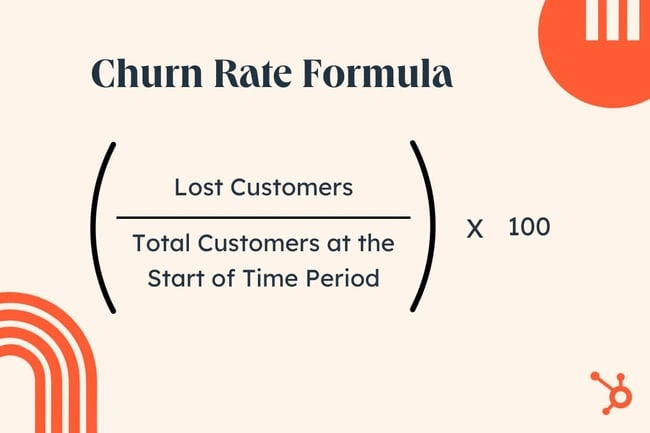
11. Engagement Over Time
Understanding when your audience is most engaged is critical for optimizing send times and content strategy. This KPI involves analyzing open rates, CTRs, and conversion rates over different times to identify patterns in engagement. It helps to tailor your email marketing efforts to the times when your audience is most receptive.
Optimize Engagement Over Time by analyzing your email campaign data to identify peak engagement periods. Experiment with sending emails on different days and times to determine when your audience is most likely to open, click, and convert. Use this information to schedule your email campaigns accordingly, ensuring they align with your audience’s preferences and habits.
Calculating Engagement Over Time
Track your Open Rates, CTRs, and Conversion Rates at different send times. Segment this data by day of the week and time of day, then identify when these metrics peak. Calculate average rates for each time segment to pinpoint the most effective times for engagement, guiding you to schedule emails when your audience is most receptive.
12. Spam Complaint Rate
This KPI is essential for understanding how recipients perceive your emails. A high spam complaint rate can harm email deliverability and your sender’s reputation, making it crucial to create resonant content for your target audience and adhere to best email practices.
To minimize the Spam Complaint Rate, ensure your email content is relevant and valuable to your audience, avoiding overly salesy or aggressive language. Always obtain consent before adding new contacts to your list, and provide a clear, easy unsubscribe option. Regularly updating your list to remove unengaged subscribers can also help reduce the likelihood of complaints.
Calculating Spam Complaint Rate
Divide the number of spam complaints by the amount of delivered emails, and multiply by 100.
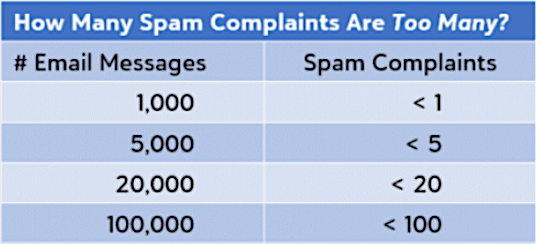
13. Email Read Rate
The Email Read Rate determines how many people actually spend significant time reading your emails. It gives insight into the relevance and engagement level of your content, offering a deeper understanding of how your content is consumed.
Enhance your Email Read Rate by crafting concise, engaging content and ensuring it’s mobile-friendly for ease of reading. Use attention-grabbing subject lines and visually appealing formats to encourage longer reading times.
Calculating Email Read Rate
Use advanced email marketing tools that track how long a recipient spends reading an email. The Read Rate is expressed as a percentage of recipients who fall into the “read” and “thoroughly read” categories out of the total emails delivered.
Integrating KPIs into Your Marketing Dashboard
Integrating KPIs into your marketing dashboard starts with selecting the metrics that align with your business goals.
Prioritize KPIs that directly reflect your marketing objectives, ensuring your dashboard focuses on the most impactful data. Next, categorize your KPIs based on different aspects of your email campaign (like engagement, deliverability, and financial returns) for a comprehensive view.
Integrating real-time analytics into your dashboard allows immediate insights and agile responses to your campaign’s performance. This dynamic approach enables you to adjust strategies promptly, enhancing the effectiveness of your campaigns.
Refine Your Email Strategy with KPIs
Effectively utilizing KPIs to refine your email strategy involves a cycle of measurement, analysis, and adjustment. Start by analyzing your KPI data to identify patterns and trends. Based on these insights, adjust your email campaigns. Experiment with different subject lines, email content, layouts, and send times.
Monitor how these changes impact your KPIs to understand what works best for your audience. This iterative process is vital to continually improving campaign effectiveness.
Be sure to segment your audience based on their behaviors and preferences, revealed through KPIs like engagement and conversion rates. Tailored content for different segments can significantly improve your results.
Finally, always stay updated with email marketing best practices and include them in your strategy.
Elevate Your Email Marketing with mvpGrow
Each of these KPIs provides valuable insights into different aspects of your email marketing campaigns. You can ensure your campaigns resonate with your audience and achieve your business goals by analyzing and modifying your strategies based on these metrics. They allow you to make data-driven decisions to optimize your email marketing efforts to maximize impact and ROI.
At mvpGrow, we craft winning email campaigns driven by data and refined through insights. Our expert team understands the nuances of email marketing and how to leverage these KPIs for startup growth. We’re committed to helping you create email strategies that reach, engage, and convert your target customers.
Ready to elevate your email marketing game? Contact mvpGrow for a free Zoom consultation on email marketing strategy today.

The Founder & Chief Getting Sh%T Done Officer of mvpGrow. After about 8 years as a hired hand some of the largest (and smallest) B2B SaaS companies worldwide I decided to hang up my employee slippers and lace up my growth agency cleats. But just because I’m an agency doesn’t mean we can’t chat (no charge). Please email me on any topic and I will gladly reply: eyal@mvpgrow.com
